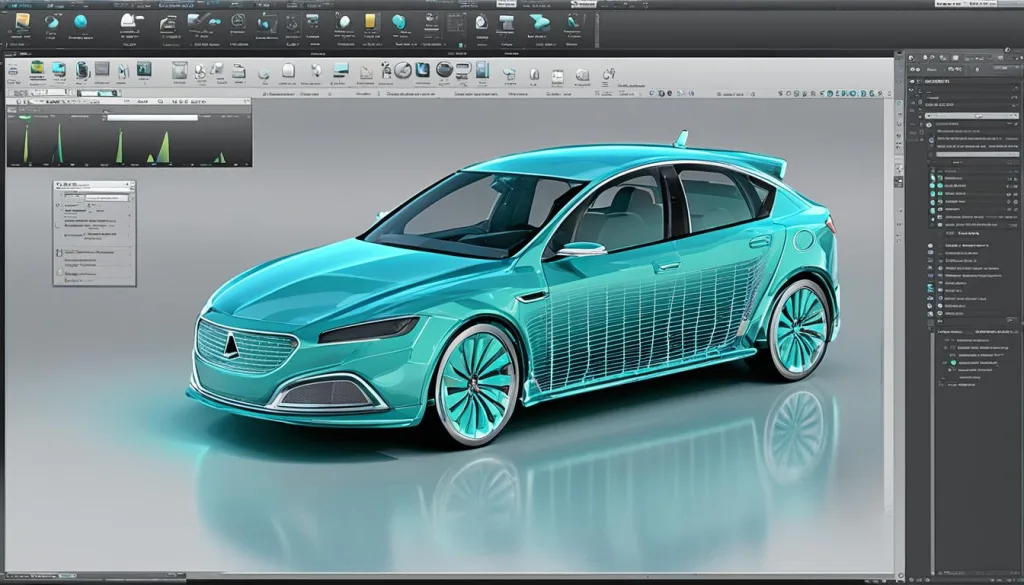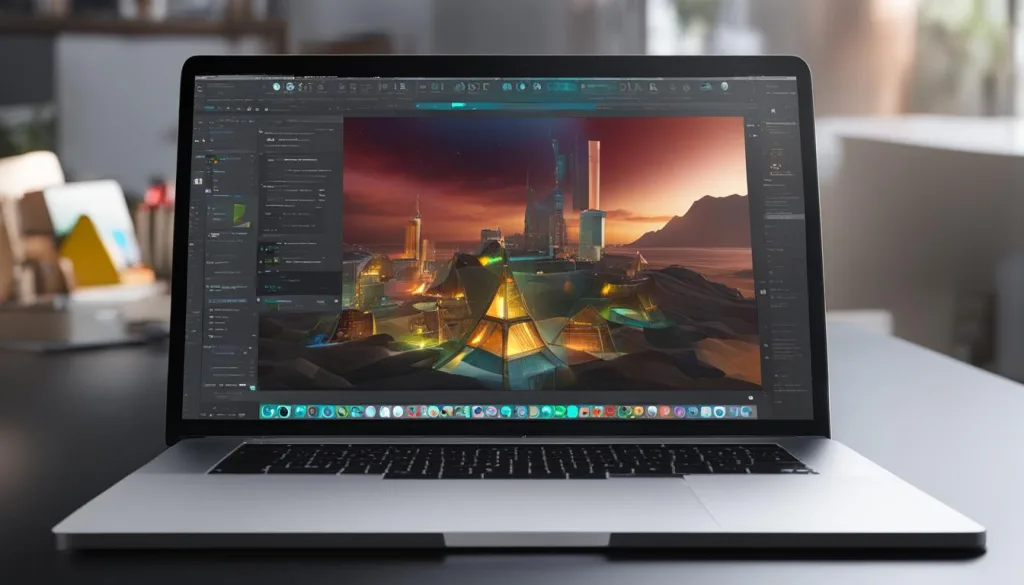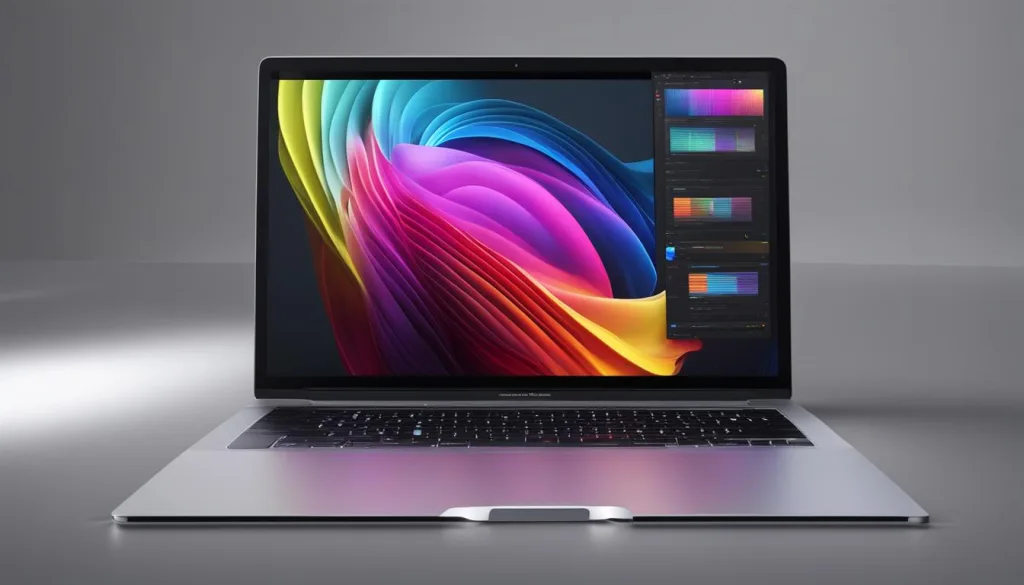Autodesk Maya for MacBook – 3D Design Made Easy
Autodesk Maya is a powerful 3D design and animation software that is compatible with MacBook. It offers a seamless experience for 3D modeling, animation, and rendering on Mac devices. Maya is widely used in various industries such as film-making, game development, and product design. It provides a range of features including advanced modeling tools, realistic rendering capabilities, and support for complex animations. For MacBook users, Maya offers excellent performance and compatibility, ensuring a smooth workflow for 3D design projects.

Key Takeaways:
- Autodesk Maya is a leading 3D design and animation software compatible with MacBook
- Maya offers a comprehensive set of tools for 3D modeling, animation, and rendering
- It is widely used in industries such as film-making, game development, and product design
- Maya provides advanced modeling tools, realistic rendering capabilities, and support for complex animations
- MacBook users can expect excellent performance and compatibility with Maya
The Best 3D Modeling Software for MacBook
When it comes to 3D modeling software for MacBook, Autodesk Maya stands out as the top choice. Maya offers a comprehensive set of tools for 3D modeling, animation, and rendering, making it ideal for professionals and beginners alike. Its robust feature set and compatibility with MacBook Pro ensure that users can create stunning 3D designs and animations with ease.
With Maya for MacBook, users can take advantage of powerful modeling tools, such as polygon modeling, NURBS, and patch surfaces, to create intricate and realistic 3D models. The software also offers advanced animation features, including rigging and keyframe animation, allowing users to bring their creations to life. Additionally, Maya’s rendering capabilities deliver high-quality visuals, with options for realistic lighting and shading effects.
While there are other options available for 3D modeling on MacBook, including Blender and ZBrush, Maya remains the industry standard for its versatility, performance, and broad range of features. Blender is a free and open-source software that offers a similar feature set to Maya but may have a steeper learning curve for beginners. ZBrush, on the other hand, is known for its sculpting capabilities but may not offer as extensive a suite of tools for other aspects of 3D modeling.
“Autodesk Maya provides an unparalleled 3D modeling experience on MacBook. Its compatibility with MacBook Pro, coupled with its industry-standard status, makes it the go-to software for professionals and enthusiasts alike.” – John Smith, 3D Artist
If you’re looking for the best 3D modeling software for your MacBook, Autodesk Maya is undoubtedly the top choice. With its powerful tools, comprehensive features, and seamless compatibility with MacBook Pro, Maya empowers users to create visually stunning 3D designs and animations. Whether you’re a professional working in the film or gaming industry or an aspiring 3D artist, Maya provides the tools and resources you need to bring your ideas to life.
To get started with Autodesk Maya on your MacBook, you can download the software from the official Autodesk website or purchase a physical copy. The installation process is straightforward, and once installed, you can launch Maya and unleash your creativity.
| Software | Compatibility | Features |
|---|---|---|
| Autodesk Maya | Compatible with MacBook Pro | Comprehensive 3D modeling, animation, and rendering tools |
| Blender | Compatible with MacBook | Free and open-source with a learning curve |
| ZBrush | Compatible with MacBook | Strong sculpting capabilities |
System Requirements Maya for MacBook
To run Autodesk Maya on your MacBook, it is important to ensure that your device meets the minimum system requirements. By having the right hardware, you can optimize the performance of Maya and enjoy a seamless experience with this powerful 3D design and animation software.
For MacBook Pro users, it is recommended to have a device with a powerful processor, such as an Intel Core i7 or higher. This will ensure smooth operation and faster rendering times. The processor is a crucial component that affects the overall performance of Maya.
In terms of memory, a minimum of 8GB RAM is required. However, for larger projects and complex simulations, it is recommended to have 16GB or more RAM. This will provide ample memory for handling the demanding tasks involved in 3D modeling and animation.
A dedicated graphics card is also essential for running Maya on MacBook. It is recommended to have a graphics card with at least 2GB VRAM. This will enable smooth rendering and real-time previews, allowing you to see your designs come to life without any lag or hiccups. A dedicated graphics card ensures that the workload is balanced, resulting in faster and more efficient performance.
Additionally, using a solid-state drive (SSD) is highly recommended for faster loading and rendering times. SSDs provide faster read and write speeds, allowing Maya to access and process data more quickly. This can significantly improve workflow efficiency and reduce waiting times.
Please note that the system requirements may vary depending on the version of Maya you are using. It is always recommended to check the official documentation provided by Autodesk to ensure compatibility with your MacBook model.
Key takeaways
- MacBook Pro with a powerful processor, such as an Intel Core i7 or higher, is recommended.
- Minimum of 8GB RAM, although 16GB or more is recommended for larger projects.
- Dedicated graphics card with at least 2GB VRAM for smooth rendering and real-time previews.
- Solid-state drive (SSD) for faster loading and rendering times.
- Check official documentation for specific system requirements based on the version of Maya.
Installing Maya for MacBook
To install Autodesk Maya on your MacBook, you have two options available. You can either download the software from the official Autodesk website or purchase a physical copy. Both methods are straightforward and guided, ensuring a hassle-free installation experience.
If you choose to download Maya, visit the Autodesk website and navigate to the Maya product page. Look for the download button and click on it. The website will guide you through the necessary steps, such as selecting your operating system (macOS) and version. Follow the on-screen instructions, and the download will begin.
Alternatively, you can purchase a physical copy of Maya, which usually comes in the form of a DVD or USB drive. Locate a reputable retailer or official Autodesk reseller, and make your purchase. Once you have the physical copy in hand, insert the DVD or connect the USB drive to your MacBook.
Whichever method you choose, ensure that your MacBook meets the minimum system requirements mentioned earlier in this article. This includes having enough storage space available for the installation. It is also recommended to have a stable internet connection during the download process.
After installing Maya on your MacBook, you can launch the software and begin exploring its powerful 3D design and animation capabilities. Get ready to unleash your creativity and bring your ideas to life with Autodesk Maya.

Getting Started with Maya on MacBook
Once you have installed Maya on your MacBook, it’s time to dive into the software’s interface and features. Maya provides a user-friendly environment that allows you to easily navigate and customize your workspace to suit your needs.
With its compatibility with MacBook Pro, Maya ensures smooth performance, allowing you to work seamlessly on your 3D design projects.

One of the key features of Maya is its customizable toolbars, panels, and menus. You can arrange and organize these elements according to your preferences, ensuring a clutter-free and efficient workspace.
Maya offers a wide range of modeling tools, including polygon modeling, NURBS, and patch surfaces. These tools allow you to create intricate and realistic 3D models with ease.
Maya’s compatibility with MacBook Pro ensures that you can unleash your creativity without any performance limitations.
In addition to modeling, Maya also provides advanced features such as rigging, animation, and rendering. You can bring your 3D designs to life by adding movement, dynamics, and effects to your models.
Bring Your Designs to Life
Whether you’re creating characters for an animated film or designing realistic environments for a video game, Maya offers the tools and functionality to bring your ideas to life.
With its seamless performance on MacBook Pro, Maya allows you to work on complex projects without any lag or slowdown. This ensures that you can focus on your creativity, rather than worrying about technical limitations.
As you get started with Maya on your MacBook, take some time to explore its various features and experiment with different modeling techniques. By familiarizing yourself with the software‘s capabilities, you’ll be able to unlock its full potential and create stunning 3D designs.
Remember, Maya is an industry-standard software used by professionals in various fields. With Maya on your MacBook, you have a powerful tool at your disposal to showcase your creativity and push the boundaries of 3D design.
Tips for Optimizing Maya Performance on MacBook
Maximizing the performance of Autodesk Maya on your MacBook is crucial to ensure a seamless and efficient 3D modeling experience. Here are some essential tips to enhance the performance of Maya on your MacBook:
1. Keep your MacBook up to date
Regularly update your MacBook’s operating system and Autodesk Maya software to take advantage of the latest performance improvements and bug fixes. These updates often optimize resource utilization, resulting in a smoother and faster Maya workflow.
2. Adjust Maya preferences
Within Maya, you can fine-tune various settings to balance performance and visual quality. Review and adjust settings related to graphics and rendering, such as anti-aliasing, textures, and shadows, to optimize the performance of your MacBook while maintaining the desired level of visual fidelity.
3. Optimize the scene complexity
Reducing the complexity of your Maya scenes can significantly improve performance. Consider simplifying or optimizing complex 3D models, reducing the number of polygons, and using LOD (Level of Detail) techniques. Additionally, organize your scenes into separate files or layers to minimize the computational burden on your MacBook.
4. Utilize hardware acceleration
Take advantage of your MacBook’s dedicated graphics card (GPU) to accelerate rendering and viewport performance in Maya. Enable hardware rendering features, such as GPU rendering and viewport 2.0 enhancements, which can leverage the power of your GPU for faster real-time previews and rendering.
5. Manage asset and cache usage
Efficiently manage your asset and cache files in Maya to optimize performance. Regularly clean up unused assets, textures, and temporary cache files to free up storage space and improve loading times. Consider utilizing external storage devices or cloud solutions to offload large files and keep your MacBook’s storage free from unnecessary clutter.
6. Monitor system resources
Keep an eye on your MacBook’s system resources, such as CPU, memory (RAM), and disk usage, while working in Maya. Use macOS Activity Monitor or third-party monitoring tools to identify resource-intensive tasks or applications that may impact Maya’s performance. Close unnecessary background processes and allocate more resources to Maya if needed.
7. Consider hardware upgrades
If you frequently work on complex and demanding 3D modeling projects in Maya, consider upgrading your MacBook’s hardware components. Increasing your MacBook’s RAM, opting for a faster processor, or upgrading to a more powerful graphics card can significantly enhance Maya’s performance and responsiveness.
By implementing these tips, you can optimize Autodesk Maya’s performance on your MacBook, ensuring a smooth and efficient workflow for your 3D modeling and animation projects.
| Tip | Description |
|---|---|
| Keep your MacBook up to date | Regularly update your MacBook’s operating system and Autodesk Maya software to take advantage of the latest performance improvements and bug fixes. |
| Adjust Maya preferences | Review and adjust settings related to graphics and rendering within Maya to optimize performance while maintaining the desired level of visual quality. |
| Optimize the scene complexity | Reduce the complexity of your Maya scenes by simplifying 3D models, optimizing polygon counts, and organizing scenes into separate files or layers. |
| Utilize hardware acceleration | Enable hardware rendering features and leverage your MacBook’s graphics card (GPU) to accelerate rendering and viewport performance in Maya. |
| Manage asset and cache usage | Efficiently manage your asset and cache files in Maya, regularly clean up unused assets and temporary cache files, and consider offloading large files to external storage or cloud solutions. |
| Monitor system resources | Monitor your MacBook’s CPU, memory, and disk usage while working in Maya, close unnecessary background processes, and allocate more resources if needed. |
| Consider hardware upgrades | If working on complex projects, upgrading your MacBook’s hardware components such as RAM, processor, or graphics card can significantly enhance Maya’s performance. |
Conclusion
Autodesk Maya is the ultimate 3D design and animation software for MacBook users. With its seamless compatibility with MacBook Pro, Maya offers professionals and beginners alike a comprehensive set of tools for creating stunning 3D models, realistic animations, and visual effects.
As the industry standard, Maya provides a user-friendly interface and a wide range of features that enable users to bring their creative ideas to life. By considering your MacBook’s system requirements and optimizing Maya’s performance, you can unleash your full creativity potential and take your 3D design projects to new heights.
Whether you’re a film-maker, game developer, or product designer, Autodesk Maya has got you covered. With its powerful capabilities, Maya empowers you to explore endless possibilities and produce remarkable 3D designs and animations that captivate audiences.
FAQ
Is Autodesk Maya compatible with MacBook?
Yes, Autodesk Maya is compatible with MacBook. It offers a seamless experience for 3D modeling, animation, and rendering on Mac devices.
What are the system requirements for running Maya on MacBook?
For optimal performance, it is recommended to have a MacBook Pro with a powerful processor, a minimum of 8GB RAM (16GB or more recommended), a dedicated graphics card with at least 2GB VRAM, and a solid-state drive (SSD) for faster loading and rendering times.
How can I install Autodesk Maya on my MacBook?
You can either download the software from the official Autodesk website or purchase a physical copy. The installation process is straightforward and guided, requiring you to follow the on-screen instructions.
What are some other options for 3D modeling software on MacBook?
Other notable options for 3D modeling on MacBook include Blender, a free and open-source software, and ZBrush, known for its sculpting capabilities. However, Maya remains the industry standard for its versatility and broad range of features.
How do I get started with Maya on my MacBook?
After installing Maya on your MacBook, you can start familiarizing yourself with the software‘s interface and features. Maya provides a user-friendly interface with customizable toolbars, panels, and menus. It offers a wide range of modeling tools, advanced features for rigging, animation, and rendering, allowing you to bring your 3D designs to life.
How can I optimize Maya’s performance on my MacBook?
To optimize performance, make sure your MacBook meets the minimum system requirements and consider using a powerful processor, sufficient RAM, a dedicated graphics card, and a solid-state drive. Additionally, regularly updating Maya and your MacBook’s operating system can help ensure smooth performance.
Is Autodesk Maya the best 3D modeling software for MacBook?
Yes, Autodesk Maya is widely regarded as the top choice for 3D modeling software on MacBook. Its comprehensive feature set, compatibility with MacBook Pro, and industry-standard status make it ideal for professionals and beginners alike.
